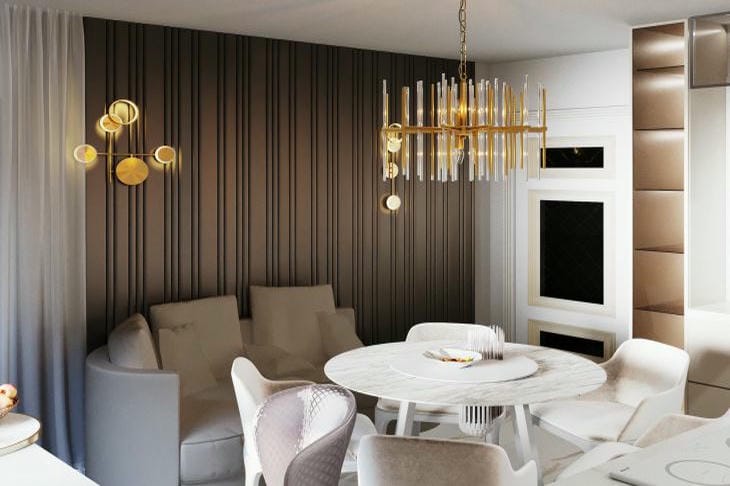Correctly chosen colors can make the space more harmonious and cozy, while the wrong combinations can cause discomfort.
Let's look at some key aspects that will help you choose the perfect color palette for your interior.
Determine the purpose of the room
First of all, think about the purpose of each room. The colors used in the bedroom may differ from those suitable for the kitchen or study, says Yulia Tychino .

- Bedroom: For a relaxing atmosphere, soft and calm shades such as light blue, pastel green or beige are best.
- Living room: Here you can use brighter and warmer colors such as coral, yellow or terracotta, which will encourage communication.
- Kitchen: This room often chooses invigorating colors, such as light shades of green or yellow, which can stimulate appetite and create an alert atmosphere.
Consider lighting
Lighting has a significant impact on how colors are perceived. When choosing a color palette, consider how different lighting (natural and artificial) will affect the shades you choose.
- Natural light. In northern rooms where there is little sunlight, it is preferable to use warm and light colors to compensate for the lack of sunlight.
- Artificial lighting. Different light sources can create different effects: incandescent bulbs will give the colors a warm tint, while LEDs can make them cooler. Test your chosen colors with different light sources to see how they will look at different times of day.
Create Harmony with Color Theory
To understand how colors interact with each other, it is useful to look at color theory. Here are some important concepts:
- Complementary colors are colors that are opposite each other on the color wheel. They create vivid contrasts. For example, the combination of blue and orange creates dynamism.
- Analogous colors. These colors are located next to each other on the color wheel and create harmonious palettes. For example, green, light blue, and blue will create a calming atmosphere.
- Monochrome colors are different shades of one color. This approach allows you to create a unified style without sharp contrasts.
Consider existing furniture and decor
When choosing a color palette, it is important to consider the existing furniture and decorative elements in the room.
If you have bright accents, such as furniture or paintings, think about how the wall color will work with them. You can choose neutral colors for the walls to balance out the bright accents of the furniture, or you can choose bright colors for the walls to create contrast.
Creating a focus
Consider whether you want to highlight a specific area in the interior. For example, a bright wall behind the sofa can become the center of attraction in the living room. It is important to remember that accent colors should not be too aggressive, so as not to overload the space.
Real-life testing
Before making a final choice, it is recommended to test the colors in real conditions. Buy small samples of paint or wallpaper and apply them to the wall. See how they will look during the day, as lighting can significantly change the perception of color.
Don't be afraid to experiment
Color is a way to express your personality and style. Don’t be afraid to experiment with different shades and combinations until you find the perfect palette that inspires you.
For reference
Interior is a view from the inside of an object, opposite to the concept of exterior - a view from the outside of a building or structure.









